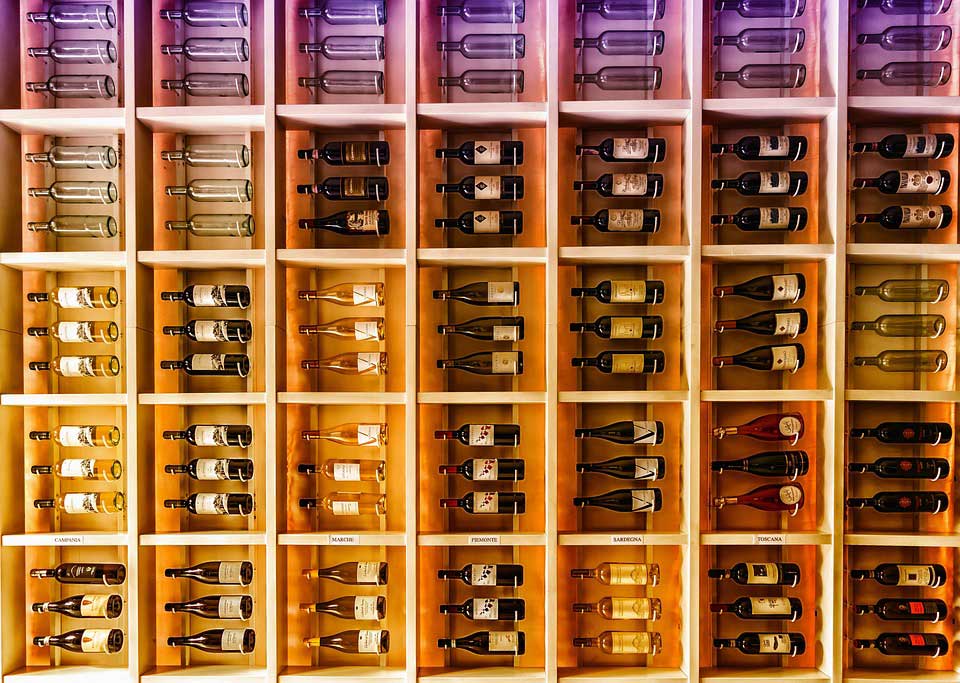Wine, with its delicate flavors and complex nuances, is a beverage that ages like a fine artwork. But to ensure it reaches its peak potential, proper storage is paramount. Whether you’re a casual enthusiast or a dedicated connoisseur, understanding the art of storing wine correctly is crucial for preserving its quality and taste. Here’s a comprehensive guide to storing wine, unlocking the secrets to maintaining its excellence.
1. Storing: Ideal Conditions
Temperature:
Maintaining a consistent temperature is fundamental. Aim for a range between 45°F and 65°F (7°C to 18°C). Fluctuations in temperature can adversely affect the wine’s chemical balance, causing it to mature prematurely or develop off-flavors.
Humidity:
Humidity levels should ideally hover around 70%. This prevents corks from drying out, which can lead to air seepage into the bottle and spoil the wine. Humidity ensures the cork remains swollen and snug, safeguarding the wine’s integrity.
Light:
Ultraviolet rays can degrade wine. Store bottles away from direct sunlight or strong artificial light sources to prevent the wine from developing faults or losing its color.
Vibration:
Minimize vibrations, as they can disturb the sediments in wine and affect its aging process. Avoid placing bottles near appliances like washing machines or refrigerators that produce vibrations.
2. Horizontal Storage
Storing bottles horizontally keeps the cork in constant contact with the wine, ensuring it remains moist. This prevents air from seeping in and causing premature oxidation. Invest in a wine rack or cellar that accommodates horizontal storage to maintain the bottle’s integrity.
3. Choosing the Right Location
Dedicated Wine Fridge/Cooler:
For those with a growing collection, investing in a wine fridge or cooler is a wise choice. These appliances offer precise temperature control and humidity settings, creating an ideal environment for wine storage.
Wine Cellar or Basement:
A traditional cellar or basement can serve as an excellent storage location due to its typically cool and consistent temperature. Ensure the area is free from strong odors that can seep into the cork and affect the wine.
Avoid the Kitchen:
Despite its convenience, the kitchen is often subjected to temperature fluctuations and varying levels of humidity, making it less than ideal for wine storage.
4. Handling and Moving Bottles
When handling wine bottles, do so gently to prevent disturbing the sediments. Sudden movements or vibrations can disturb the aging process and affect the quality of the wine. Always lift bottles from the base rather than the neck to avoid any stress on the cork.
5. Monitoring and Rotation
Regularly check your wine collection for any signs of spoilage or leakage. Additionally, rotate the bottles periodically to ensure even aging and prevent sediments from settling in one place for an extended period.
6. Wine Varieties and Aging Potential
Different wines have varying aging potentials. Not all wines benefit from long-term storage. While some red wines like Cabernet Sauvignon and Bordeaux can improve with age, most white wines and lighter reds are best enjoyed within a few years of release. Maintain a meticulous record of your collection, labeling bottles accurately, and organizing them by variety, for example.
Conclusion
Properly storing wine is an investment in preserving its quality and enhancing its flavors. By maintaining ideal conditions of temperature, humidity, and light exposure, and by handling bottles with care, you can ensure your collection ages gracefully. Whether you’re saving a bottle for a special occasion or nurturing a collection for future enjoyment, these storage guidelines will help you savor every sip of your favorite vintages.
Remember, the joy of wine lies not only in its consumption but also in the anticipation of its evolution over time. So, store your bottles with care, and let time work its magic on your prized collection.
